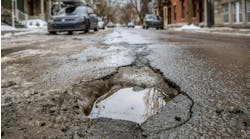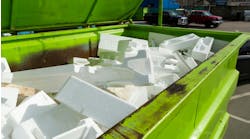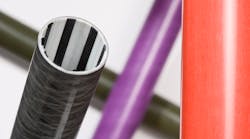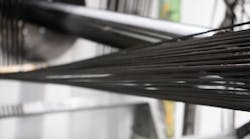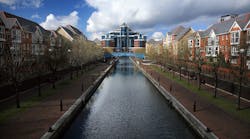Using Composites to Strengthen Seaside Infrastructure
Because they offer longer service lives and reduced maintenance compared to steel, composite materials are becoming popular reinforcements for structures found on the seafront.
Aging infrastructure is a well-documented global problem on seafronts, where salty, humid ocean air causes metals to corrode rapidly. Local governments must carry out frequent, time-consuming, and disruptive repair jobs costing billions of dollars so that structures remain safe and durable. According to CNN, the cost of fixing America’s crumbling infrastructure could be as much as $2.6 trillion.
Thankfully, the USA’s Composite Standards Act of 2021 outlines the requirement for facilitating the adoption of composite technology in infrastructure projects. Furthermore, in 2022, the American Concrete Institution passed a new code for the building requirements for structural concrete reinforced with fiberglass rebar.
While these documents aren’t specific to coastal and civil infrastructure, they will hopefully encourage civil engineering companies to use composites for their corrosion resistance, weight savings, and longer lifespan spans all contributing towards strengthening our seaside infrastructure.
If successful, the bridges, walkways, and seawalls on our seafronts will be able to stand the test of time.
Cracking Under Pressure
Concrete’s biggest weakness is its low tensile strength, traditionally remedied by using steel rebar reinforcements. However, a disadvantage of using steel in a concrete structure is that it is susceptible to corrosion. When rust forms around steel rebar, the internal pressure will increase and the concrete will crack, exposing the steel to more moisture, salt, and humidity.
Swapping out steel rebar with composites in seaside environments provides several key advantages. Firstly, carbon fiber and fiberglass composites are naturally corrosion-resistant, and ideal for short and long-term immersion in seawater. This property is determined by choosing high-performance premium-grade resins, which ensure low water absorption and protection from aggressive chemicals.
Furthermore, composites don’t require additional coatings, such as electroless nickel plating or zinc galvanization for stainless steel, to tackle corrosion. Traditionally used to treat steel rebar the protective layer wears away over time, adding an extra step in the production and adding to ongoing maintenance costs.
Secondly, because composites are lightweight, they are much easier to install as reinforcements in bridges and walkways. Fiberglass rebar is approximately one-quarter of the weight of steel rebar, meaning companies can transport more profiles to the site, saving on transportation costs. Furthermore, because fiberglass is lighter than steel, it’s easier for installation crews to carry, helping to promote job site safety.
Modern composites also perform better with regard to torsion and tension. Fiberglass has a higher tensile strength compared to steel, making it ideal for structural support in a bridge or walkway.
For seaside applications with cyclic loading, reinforcing materials must have good fatigue resistance. Seawalls, for example, must endure persistent, high-energy forces from waves to protect the land from flooding and coastal erosion. Because of their tensile strengths, composite sheet piles thrive because they can withstand exceptional force without fragmenting.
‘Made in the USA’
These mechanical properties are non-negotiable for civil engineers needing long-life, durable solutions with low whole-life costs. Through a process called pultrusion, fibers are pulled through a resin bath and cured in a heated die, before being cut to their desired lengths. The process is highly automated, which ensures continuous, high-volume production of composite sheet piles and rebars at a consistent quality compared to manual manufacturing techniques.
If the pilot program for the Composite Standards Act of 2021 succeeds, companies will look for guidance from forward-thinking pultrusion experts, to proceed in updating the USA’s seaside infrastructure. What’s more, all composite parts can be manufactured in the USA.
Exel Composites combines a local manufacturing footprint from its factory in Erlanger, Kentucky, with the expertise of a global company to provide efficient sales support and technical consultancy. The team’s collaborative approach gives engineers total design flexibility, while technologies like pultrusion and pull-winding allow for continuous manufacturing at high volumes.
To learn more about Exel Composites’ pultrusion expertise and composite solutions that can benefit infrastructure projects, visit the website today.
Francesco Ireullo is the Head of Sales of the Americas at Exel Composites. He is a mechanical engineer specializing in the development of products and technologies with a strong focus on innovation.
